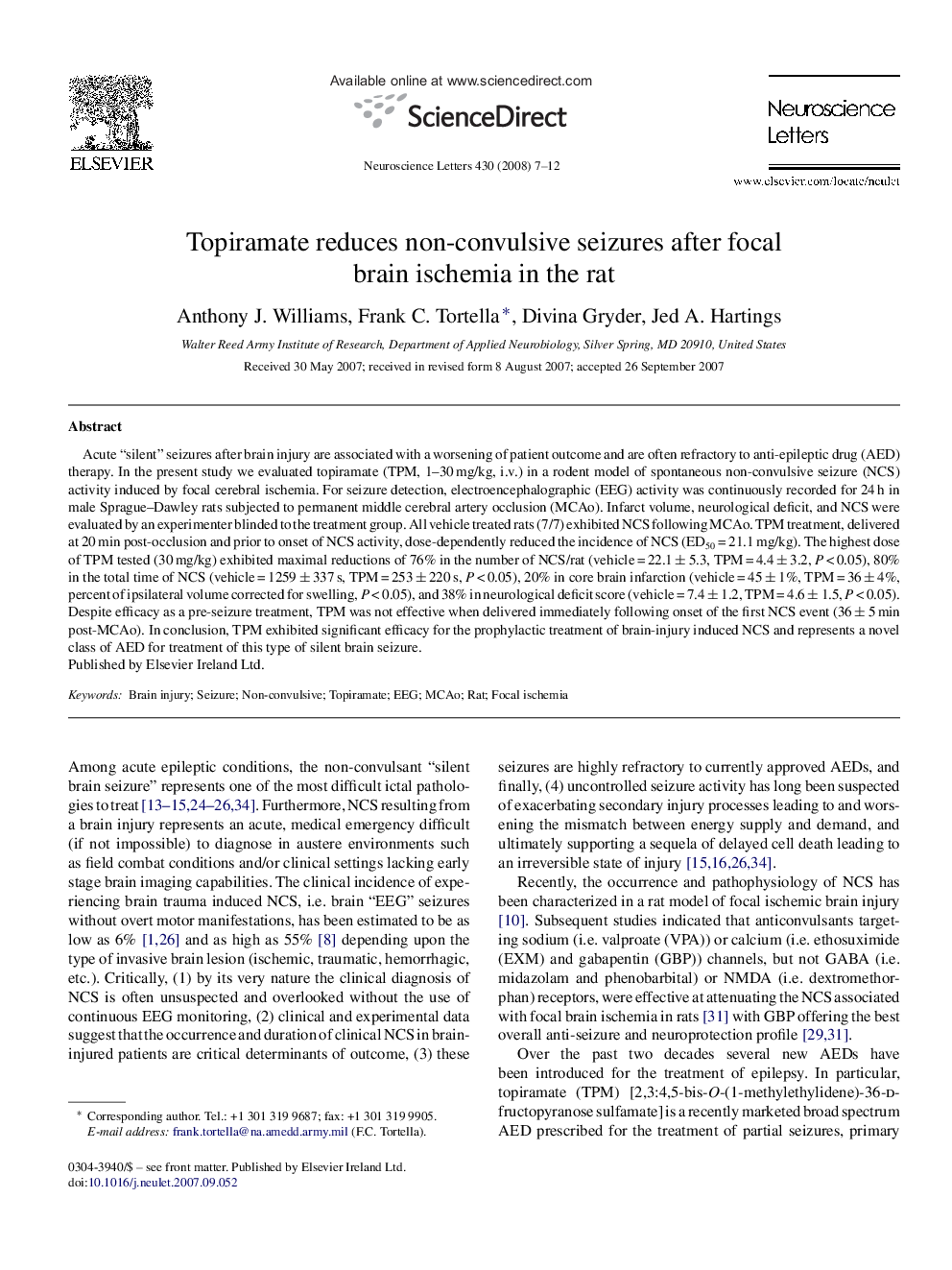| Article ID | Journal | Published Year | Pages | File Type |
|---|---|---|---|---|
| 4348919 | Neuroscience Letters | 2008 | 6 Pages |
Abstract
Acute “silent” seizures after brain injury are associated with a worsening of patient outcome and are often refractory to anti-epileptic drug (AED) therapy. In the present study we evaluated topiramate (TPM, 1-30 mg/kg, i.v.) in a rodent model of spontaneous non-convulsive seizure (NCS) activity induced by focal cerebral ischemia. For seizure detection, electroencephalographic (EEG) activity was continuously recorded for 24 h in male Sprague-Dawley rats subjected to permanent middle cerebral artery occlusion (MCAo). Infarct volume, neurological deficit, and NCS were evaluated by an experimenter blinded to the treatment group. All vehicle treated rats (7/7) exhibited NCS following MCAo. TPM treatment, delivered at 20 min post-occlusion and prior to onset of NCS activity, dose-dependently reduced the incidence of NCS (ED50 = 21.1 mg/kg). The highest dose of TPM tested (30 mg/kg) exhibited maximal reductions of 76% in the number of NCS/rat (vehicle = 22.1 ± 5.3, TPM = 4.4 ± 3.2, P < 0.05), 80% in the total time of NCS (vehicle = 1259 ± 337 s, TPM = 253 ± 220 s, P < 0.05), 20% in core brain infarction (vehicle = 45 ± 1%, TPM = 36 ± 4%, percent of ipsilateral volume corrected for swelling, P < 0.05), and 38% in neurological deficit score (vehicle = 7.4 ± 1.2, TPM = 4.6 ± 1.5, P < 0.05). Despite efficacy as a pre-seizure treatment, TPM was not effective when delivered immediately following onset of the first NCS event (36 ± 5 min post-MCAo). In conclusion, TPM exhibited significant efficacy for the prophylactic treatment of brain-injury induced NCS and represents a novel class of AED for treatment of this type of silent brain seizure.
Related Topics
Life Sciences
Neuroscience
Neuroscience (General)
Authors
Anthony J. Williams, Frank C. Tortella, Divina Gryder, Jed A. Hartings,
